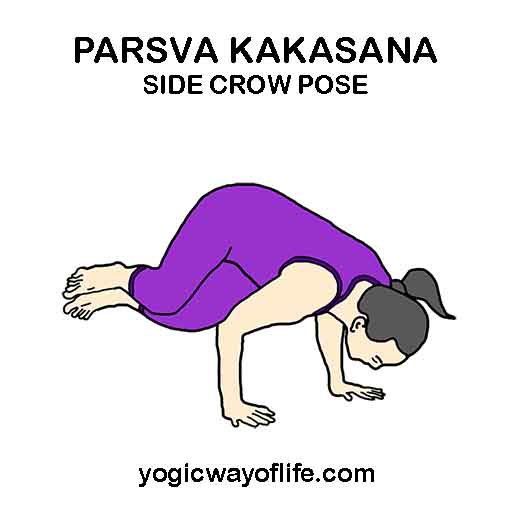Parsva Kakasana or the Side Crow Pose strengthens the arms, shoulders and wrists and improves balance and awareness. In Sanskrit, Parsva means side, Baka means crow and Asana is a pose. Parsva Kakasana is an intermediate level pose and requires strong arms and shoulders.
How to do Parsva Kakasana (Side Crow Pose)?
- Squat on the floor. Place both your palms in front of you on the ground.
- Bend forward and feel the weight of your body partially shifting on to the wrists.
- Inhale and bend forward further and let the entire weight of the body rest on the palms.
- Hold the breath and lift your legs up, above the floor.
- Support yourself entirely on your arms. Let the elbows be bent.
- The legs are bend at the knees.
- Move the left knee to the right of the right elbow. Hold the position for as long as you are comfortable. Let your gaze be on the floor.
- This is the final position of Parsva Kakasana. Keep the elbows bent. If you straighten the elbows, it becomes another pose which is similar to this, which is called Parsva Bakasana or the side crane pose. It requires more strength, but gives similar benefits.
- To release the pose, bring back the knees to the centre and lower the legs to the floor. Come back to the squat position.
- This should be repeated on the left side as well.
Benefits of Parsva Kakasana (Side Crow Pose)
- Parsva Kakasana strengthens the arms, wrists and shoulders.
- It brings balance and coordination to the body.
- The side Crow pose strengthens the core muscles.
- It puts pressure on the abdomen and improves the function of organs inside the abdomen.
- This asana can improve digestion.
- It improves awareness and concentration.
- This pose boosts your self-confidence.
Kakasana put your entire weight on the wrists. Hence, please read the precautions below.
Contraindications for Parsva Kakasana
- Do not do Parsva Kakasana if you have any injury of the wrists. If your wrists are weak, practice slowly under supervision to achieve the pose.
- Do not do this pose if you have injury of the arms or shoulders.

